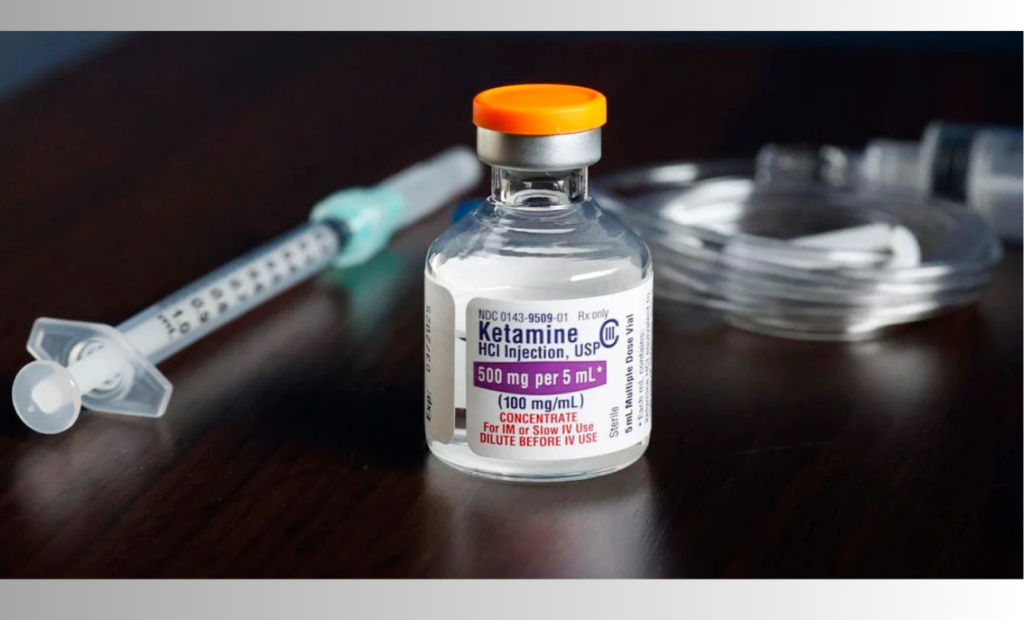Are you ready to discover how Ketamine Therapy can offer fast relief for mental health struggles and how Medicare can help cover the cost?
| Table of Contents: Introduction: Understand the Importance of Ketamine Therapy and Medicare Coverage What is ketamine therapy? Learn How It Can Help You The Fast-Acting Nature of Ketamine Therapy How Ketamine Provides Relief Explanation of Ketamine Infusion Therapy The Process of Ketamine Infusion Therapy Induction and Maintenance Phases in Ketamine Therapy Common Uses of Ketamine Treatment-Resistant Depression Anxiety and Social Anxiety Obsessive-Compulsive Disorder (OCD) Post-Traumatic Stress Disorder (PTSD) FDA Approval and Clinical Procedure FDA’s Stance on Ketamine as a Mental Health Treatment Clinical Monitoring and Safety Protocols How Does Ketamine Therapy Work? Discover the Treatment Process The Induction Phase The Maintenance Phase Medicare and Its Coverage Options: Explore Your Medicare Benefits Medicare Part A: Hospital and Skilled Care Medicare Part B: Doctor’s Services and Medical Equipment Medicare Part C (Advantage Plans): Enhanced Benefits Medicare Part D: Prescription Drug Coverage Out-of-Pocket Costs for Ketamine Therapy: Plan Ahead for Your Expenses Average Costs of Ketamine Infusion Therapy Financial Considerations During the Induction Phase Financial Burdens and Out-of-Pocket Expenses Understanding the Costs of Ketamine Therapy How Medicare and Insurance Can Help Advocacy by Organizations like the Ketamine Task Force Role of Advocacy Organizations Public Education and Awareness Campaigns Conclusion: Take Control of Your Mental Health Treatment Today |
- Introduction: Understand the Importance of Ketamine Therapy and Medicare Coverage
Ketamine therapy is a powerful treatment for those individuals who face severe depression and traditional medicine doesn’t give them relief. This therapy is beneficial for those persons who have lost their hope. These drugs are FDA-approved. Mental health problems can be relieved through this therapy as an essential treatment.

2. What is ketamine therapy? Learn How It Can Help You
Ketamine treatment is used to improve mental health conditions; it is a medicine that provides immediate relief to the individual. It is administered via nasal spray. Ketamine works more effectively than traditional medicines and provides relief in hours. It responds very fast to eliminate anxiety, depression, and disorders in individuals.
This therapy is done through intravenous drip. This procedure takes about 40 minutes to 1 hour. Ketamine therapy sessions are performed in a series. The induction phase is the first phase, which consists of six infusions. After the induction phase, the patient follows the maintenance phase, which is provided according to individual needs.
3. Common Uses of Ketamine (e.g., Treatment-Resistant Depression)
Ketamine therapy is very famous for treatment-resistant depression. It is the best alternative to traditional treatments. Ketamine provides a better role in treating all low mental health conditions.
Anxiety: Ketamine therapy is used to reduce anxiety and depression in individuals. It helps individuals suffering from social anxiety disorder and general anxiety disorder in a modern way.
Obsessive-Compulsive Disorder (OCD): This therapy also plays an important role in reducing OCD. It is very important for changing behaviors and thoughts.
Post-Traumatic Stress Disorder (PTSD): It also plays an important role in reducing OCD. It is very important for changing behaviors and thoughts. Ketamine therapy changes the chemistry of the mind and provides a better life by reducing mental traumas and depression in individuals.
4. FDA Approval and Clinical Procedure
Ketamine is an FDA-approved medication that is used for mental health treatment. It is used to relieve depression and anxiety. Due to its effectiveness and good benefits, Esketamine is used to reduce depression. This therapy is monitored by trained medical professionals.
5. How Does Ketamine Therapy Work? Discover the Treatment Process
The Induction and Maintenance Phases
There are two phases in ketamine therapy. The first one is the induction phase, and the second one is the maintenance phase.
- Induction Phase:
The induction phase during ketamine therapy is the initial stage of treatment, which provides immediate relief to the patient. This therapy consists of 6 infusions. This phase reduces symptoms in patients. These individuals provide long-term improvement.
- Maintenance Phase:
After the induction phase, the maintenance phase of ketamine therapy begins. In this therapy, the dose is reduced. Ketamine is provided to patients according to their needs and conditions. In this phase, the mental health and progress of the patient are maintained.
6. Medicare and Its Coverage Options: Explore Your Medicare Benefits
Ketamine therapy is a program designed specifically for the treatment of older adults or teenagers who qualify for disabilities. Is this medication divided into different parts?
Part A: Part A provides the best hospital care, skilled nursing care, and home health services.
Part B: Part B provides services like doctors’ attention, lab tests, medical instruments, and prevention measures.
Part C (Medicare Advantage): It provides the best Medicare by including Parts A and B, which include vision, dental, and hearing.
Part D: Part D provides prescription drug coverage that helps patients afford their medications.
7. Out-of-Pocket Costs for Ketamine Therapy: Plan Ahead for Your Expenses
Average Costs of Ketamine Infusion Therapy
The cost of ketamine infusion therapy depends on the clinic, location, and number of sessions. The average cost of ketamine therapy is $400 to $800. In the induction phase, patients take more than 6-10 sessions. In the maintenance phase, sessions consist of 2-3 weeks, like the induction phase, and the general cost of the maintenance phase is $300 to $500.
8. Financial Burdens and Out-of-Pocket Expenses
Patients afford the high expenses through Medicare or private insurance plans. Individuals face financial pressure when undergoing ketamine therapy. Patients have to pay the fee for the treatment itself. This cost is divided into twelve sessions per week.

9. Advocacy by Organizations like the Ketamine Task Force
Different organizations, like the Ketamine Task Force provide ketamine therapy services. These organizations play a role in educating the public and creating awareness in this regard. These organizations play a role in addressing mental health issues through Ketamine therapy.
10. Conclusion: Take Control of Your Mental Health Treatment Today
Ketamine therapy plays an important role in improving individuals’ depression, anxiety, or mental health conditions. Different organizations have different treatments to make it accessible to the reader. Different clinics like Neuroglow offer care or financial help to patients. Research is also being done regarding ketamine treatment. Acha treatment option select kr k hm better future adopt kr skty hyn. The selection of the best treatment helps patients to adopt a better future.
